Google Search Vs. Display Ads
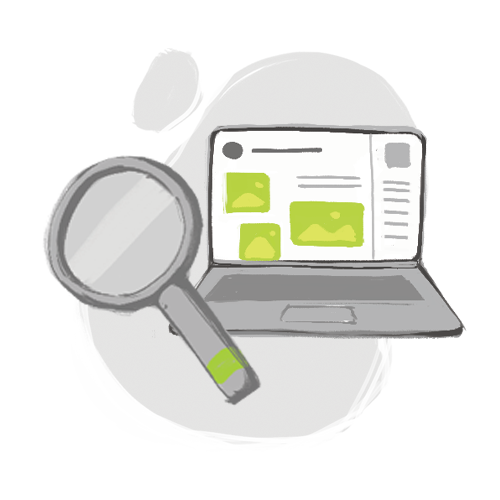
Navigating Google’s Ad Options
As a Certified Google Partner, we want to provide info that better frames all the digital marketing options available to business owners. While Meta, Instagram, Tik Tok, Reddit, and more are all viable options, this post will focus on the key differences and utility of two Google ad channels:
- Google Display Ads
- Google Search Ads
If you have ever wondered why exactly a Google Display campaign better fits your needs (or vice-versa) read below! Knowing how to leverage each Google ad channel can be a key factor to help increase sales on Shopify.
Google Search Ads: Pulling in the Local Crowd
Google Search ads only appear to online users who have searched your business’s keywords, or have executed a search looking for a local solution to their “need.” For businesses that run local services like food, home improvement, retail, auto, or more, Google search ads could be a key promotional tool.
For example, if I type in, “Auto repair near me,” and your auto body shop recently deployed a Google search ads campaign, guess who I’m going to when the results come up! 😊
If users already have a clear intent for their need, and already know they have an issue that needs a solution, Google search ads can boost your click-through-rate (CTR) and lead to increased sales on your Shopify store.
To maximize your conversions on Google search ads, do your research on the best keywords that match your business! Bidding higher on these keywords will automatically push you up the Google Search Engine Results Page (SERP).
Concluding, “pulling” in your local audience, or researching and bidding on the best keywords to match your customers’ desires, are the two best rationales for starting a Google Search Ads campaign.
Google Display Ads: Reach the Wider Web
If you aren’t sure about what keywords to bid on, and your business is not primarily driven by local traffic, Google Display Ads offer a strong alternative to Google Search ads.
Google display ads are those sidebar images and banners that pop up across the web when you are browsing, whether it be directly for a product or not! Google display ads gain access to more than 2 million websites, videos, and apps that over 90% of web users surf across every day.
For brand awareness and visibility, Google Display ads are far superior to Google Search ads. However, remember these folks are not expressing a direct intent to buy something! As such, the average conversion rates on Display ads are lower, even if the audience reached is wider. Still, leveraged properly, Google Display can be a key component to increasing sales on Shopify.
Display ads are best when you utilize an eye-catching image with bold headlines or text. Additionally, they help, in a sense, introduce the wider web to your products! Remember that the average customer needs between 3-7 “views” of your product because they begin feeling compelled to buy.
To optimize Google display ads, it’s best to focus on specific sites you know your niche audience frequently visits. Even better, you set them to appear only to your target demographic, so you don’t end up wasting money on an overly broad ad campaign. Imagine you sell men’s grooming products, and your Google Display ads are being shown to women in the 60s… no good. They’ll be weirded out, and your money will be wasted!
Conclusion: Ad360 Can Help You Reach Beyond Google’s Display Network!
As a certified Google partner Ad360 can help any business run either a Google Search or Display ad campaign – even both! Even better, we can layer in ad retargeting to every ad campaign you run, and our Menadex network gives you access to the entire worldwide web even beyond the Google Display Network. Leveraging ad retargeting on top of wider access are crucial advantages in the digital marketing landscape.
If you would like to receive a free consultation on how to optimize your e-commerce site or want advice on which Google ad channel to run, try out our free demo by Ad360 today! We’re proud to bring you our flagship feature: One Click ad campaign setup with Quick Ads. Advertising online has never been this simple. Sign up today to get help increasing your sales on Shopify!
What differs between Clicks, Users, Sessions?
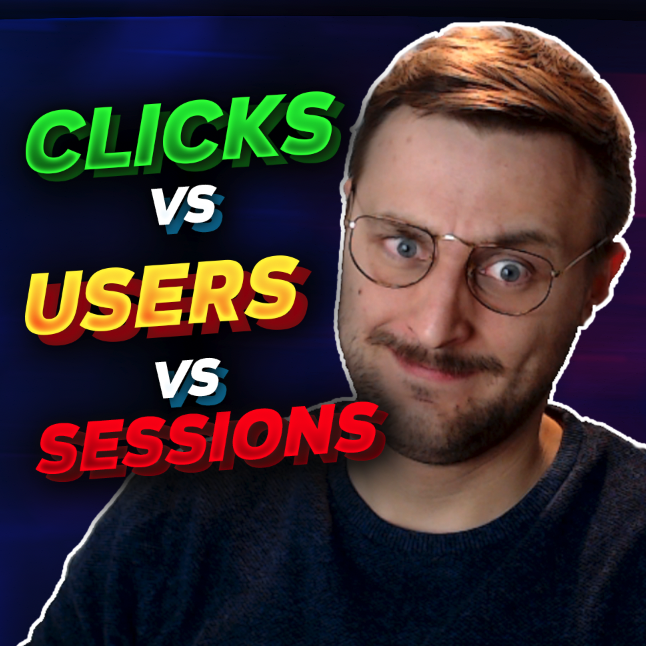
In this video, I’m responding to a question on Reddit about the difference between Clicks, Users, and Sessions on Analytics.
If you’re puzzled too, watch me read and discuss the Google Analytics documentation to make sense of these Advertising and Analytics metrics!
I’m also giving the most probable culprit IMO for this user to have such a massive difference (3x) between clicks and users.
I wish you a lot of success!
Subscribe to Ecommerce Success by Ad360, the channel where we share tips, news, best practices to help business owners be happy, productive, and successful!
Why Mobile Ads are Superior to Desktop Ads
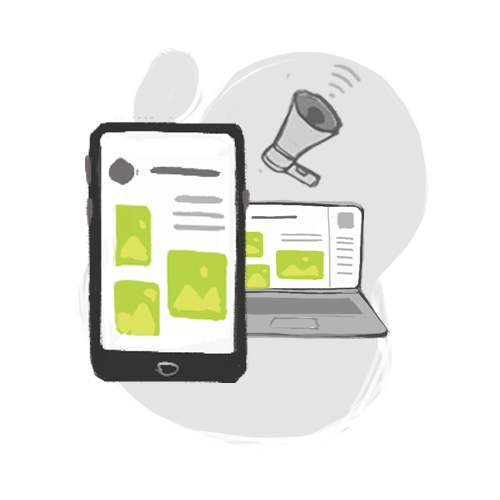
By the Numbers: Proof Mobile Ads Have Eclipsed Desktop Ads
In the past 5 years, mobile ads have taken over desktop as the most effective ways to promote your business online.
Not convinced?
Consider that in 2010, mobile ads spending didn’t even scratch $1 billion. Now, mobile ads is a ~$400 billion market, and that number is projected to eclipse $700 billion by 2028.
While still effective at ~$40 billion revenue in 2021, desktop ads lack the explosive growth factors that power mobile ads. If e-commerce businesses want to increase sales on Shopify, they have to run mobile ad campaigns.
Unlimited Access and “Intimate Expectations”
Think about it – phones/tablets/wearables are useable in way more places, and 4G internet provides uninterrupted access to the internet. That ubiquitous ease of accessibility may help explain why users, on average, spend 143 minutes browsing their phones vs only 35 minutes on their desktop.
Basically, your entire audience is online now. All of it. Everyone is either browsing the news, surfing the web, or checking out their social media. Not only that, using a personal mobile device comes with a certain level of “intimacy.” It’s not a “work laptop” or desktop, it’s a device we place all our calls from, and talk to all their friends and family on.
A fun study even pointed out that most of us even use our phones while going to the bathroom (gross), but it highlights how in vulnerable moments, people will use their phones to browse for something that catches their eye. The smaller screen and ease of “sharing” interesting posts simply make it a better place to engage with your customers. To effectively promote, you have to meet your audience where they are, and virtually all of them are hanging out on their phones!
Improved Mobile Ad Technology & Location-Based Retargeting
It’s undeniable that the user experience for mobile devices has become remarkably smoother – and overall more delightful – the past decade. Swipeable ads and popups can be seamless for the user, yet they still advertise your product!
Furthermore, location-based ad retargeting is supported much more on mobile devices than desktop. On a technical level, every user’s phone has a unique ID that is traceable, meaning once their visit your store or conduct a search with your keywords, you can send those users tailor-made ads without jeopardizing their privacy. Ad retargeting is an essential tactic in successful digital marketing, and it is much easier to do through mobile phones.
For example, Ad360 offers hyperlocal ad retargeting services, meaning you could target all mobile users down to a city block with your products. Running such a concentrated ad campaign from the desktop would simply be impossible in this scenario. Hyperlocal ads are both cost-efficient – due to paying only for the hyperlocal adspace – and focused on only your most likely and local customers. Your business will pop up locally whenever users nearby conduct a search or browse on their phone!
Key Tips to Improve your Mobile Ad Efforts
While both connected to internet mobile ads and desktops ads require totally different designs and content formats to make for a smooth user experience. Here are a few tips to follow when designing your next mobile ad campaign:
- Make it a more visual experience – Colorful, vibrant pictures with only a few words of text play well on mobile ads and capture user interest
- “Swipable” Functions that allow for a progression of content in a “slideshow” format. You could show a picture of the product with a colorful background on one page, a text description when the user swipes right, and a “Call to Action” button with a link to buy on the next! Mobile ad tactics like this are likely to increase your sales on Shopify and boost conversion rates
- Clickable Buttons that “Expand” or “Minimize” Written Content – Written content is still important, just tailor it properly so it is easily readable and can be minimized for ease of scrolling across the page.
Conclusion: Ad360 Can Run your Next Mobile Campaign with One Click
If you want assistance setting up and running your next mobile ad campaign, Ad360 is proud to present our Quick Ads feature – built to simplify the ad campaign creation process to one click. Simply enter in your “daily budget” and “location” – our Quick Ads software will extract all the data from your Shopify store and handle the rest 😊
We offer a free demo for our services, and we’re confident you’ll feel that creating mobile ads has never been so accessible and effective. Become the next ecommerce success story by reaching out today!
Google Retail Search Released to the Public
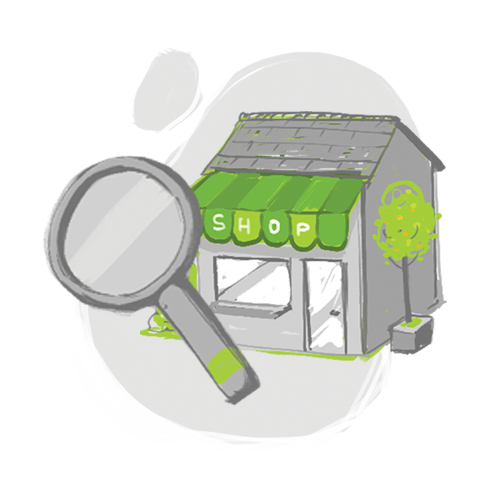
Searching but Not Finding: the Phenomena of Search Abandonment
Picture the common scenario, where, frustrated by the lack of results on their search, a customer leaves your site without buying anything.
That simple snafu costs ecommerce retailers over $300 billion a year.
Amazing, right? Such a simple hitch in the process can bleed billions of dollars in the ecommerce industry. Even retail giants like Macy’s and Ikea suffer from search abandonment, so you are not alone!
Luckily enough, Google recently released its Google Retail Search to the general public, bringing the power of Google’s search engine to all online retailers. Read below how this new Google tool can help increase your sales on Shopify!
Why Google’s Retail Search is a Win for E-Commerce
A recent poll discovered that 94% of US customers abandon an online shopping session due to irrelevant search results. Imagine that a shopper types in, “comfy winter sweater” to your search bar… they probably won’t get very precise results!
However, with Google Retail Search, backing software would be able to link the customer’s buying intent, no matter how general in their search, to specific products available in your store. Most ecommerce sites have search bars that, if the specific product name is typed, can provide the result quickly for users.
But what about all the potential customers who don’t know your brand’s products yet? Navigating around to find the item that fits their match can be a chore they refuse to do, especially when ecommerce giants may be able to provide better search matches.
How Google Retail Search Helps Increase Sales on Shopify
Google Retail Search will help boost your Shopify sales in a few ways:
1. Advanced Query Understanding
This function provides high-quality search results for even the broadest searches. If you sell footwear, and someone types in, “shoes for the beach,” instead of telling them, “What can’t find that specific product, can you refine your search?” It will bring up a list of all your products that fit the context.
2. Semantic Search
You will be able to better gauge “customer intent” to match them with the best-fitting products on site.
3. Personalized Results
Google Retail Search will also factor in each user’s previous searches through their search engine optimizing their experience and providing them tailor-made search results, even on your Shopify site! All of this is done automatically for your ecommerce business.
4. State-of-the-art Customer Data Security
While the search results provided by Google Retail Search are personalized, Google implements “strong access controls” to ensure your customer data is anonymized and protected
Conclusion: Google Retail Search is Worth a Trial
As a certified Google partner, Ad360 knows the power of leveraging Google’s incredible search engine, ad platform, and analytics technology. If you want any advice or help implement Google Retail Search to your ecommerce site, contact us at Ad360 today! We provide a free website review, along with a free trial. That way, we can test your search query and see what comes up 😊 Less search abandonment could increase sales on Shopify, so don’t hesitate to check out Google Retail Search!
3 Ways to Increase Sales on Shopify
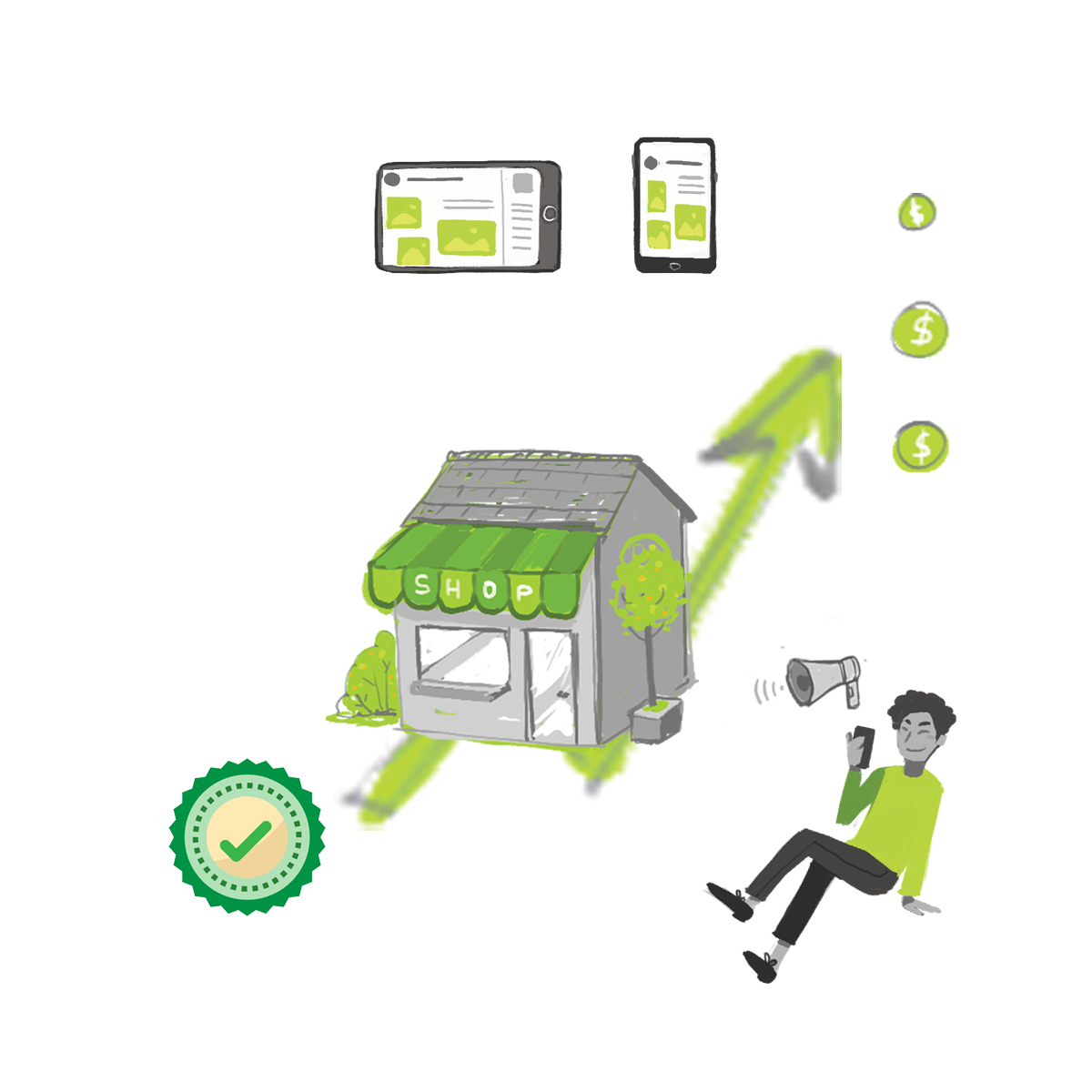
Introduction: Learn Vital Ecommerce Marketing Strategies
Finding the “right way” to promote your e-commerce business can feel like a crapshoot. With so many social media platforms and “search engines” to buy adspace on, unfocused or disorganized ad campaigns can quickly lose their sense of purpose. If your promotional efforts are not organized into a coherent marketing strategy, you can end up draining your funds with no results!
This post provides a few key promotional skills for ecommerce business owners who feel flustered while attempting to increase sales on Shopify. It will help you slow down your racing thoughts, consider different marketing angles, and put your marketing budget to good use! If you believe in your product, it’s time to give it the strong marketing it deserves – read below to boost your Shopify sales success!
Trust Badges: Easy Way to Increase Sales on Shopify
They are so subtle you may breeze past them while browsing, but “trust badges” on your homepage and checkout window have a profound psychological impact on customers. Trust badges are the little logos, usually the bottom of web pages, that indicate the following about your website:
- Verified “secure socket layer/transport layer security” (SSL/TLS) encrypted checkout
This trust badge means a third-party encryption system has verified and monitors your site’s security at checkout. Seeing a trust badge from “trust lock,” for example, makes customers less likely to abandon their cart for fear of having their payment info compromised! Check out a list of the best SSL/TLS third-party providers here
- Verified Accepted Payments Badge
To increase sales on Shopify and gain the trust of their customers, online businesses should apply for certifications from “accepted payment” giants. “Verified by Visa” and “Verified by Paypal” are two of the most-recognizable badges, and you can start the certification process by clicking the links here and here!
- Third-Party Endorsement Badge
Trust badges verifiable from the BBB or Trusted Site are also well-recognized by customers. To increase sales on Shopify, align your ecommerce business with one or both, linked here and here
One key thing to note: MAKE THE BADGES REAL AND VERIFIABLE BY “CLICKING THROUGH.” Many sites will simply “copy + paste” an existing trust badge from Google or literally generate their own. This is a big mistake, as trust badges are not legally binding. They are only as valuable as the reputation of the third parties you link to.
For example, if your “Trustlock” or “Verified by Visa” trust badge does not allow the user to “click through” and see the formal certification, it could actually make the users more skeptical, not less, or buying from your site. To increase sales on Shopify, use only trust badges you applied for and got verified by trusted third parties for. Don’t make up your own and slap them on your site. They mean nothing at that point.
Go Mobile
The number of web searches (and web surfing) done from mobile devices has more than doubled from – from 27% in 2013 to 63% in 2021. That trend will only continue to go up, so it’s important that e-commerce business owners know how to create mobile-friendly websites and ad campaigns. Mobile ad campaigns will become the primary way to increase sales on Shopify within the next several years, if it is not already. Google has a nice breakdown of how to do so here, but, for the sake of conciseness and clarity, it boils down to a few key points:
- Shorten text and simplify with “Call to action” buttons centered on the page
- Include pictures/slideshows and videos
- Using sitelinks to connect your Shopify page without taking too much space up
- Add location extensions to connect mobile users to your brick-and-mortar location
Researching and implementing mobile-friendly ad campaigns is a promotional technique that very likely will increase sales on Shopify. If you are running ads only viewable and optimized from a computer, you are basically missing out on two thirds of your potential customers!
Do Influencers Help Drive Traffic & Increase Shopify Sales?
The short answer – YES. There is a reason the idea of becoming an “influencer” is so trendy among young folk: they work. They are an unaffiliated direct line to pools of potential customers who, for one reason or another, consider it worth part of their day to scroll and wonder, “I wonder what my favorite influencer is spending their money on?”
The big advantage is the influencer themselves has done all the legwork of building a level of “credibility” and “trust” among their fanbase. You simply ride their coattails to push your products, and thousands of followers deduce, “If my favorite influencer put their name behind this product, it must be worth buying.”
Now, you don’t have to hire the entire Kardashian family to have influencer-led ad campaigns increase your sales on Shopify. There is a simple method to reach out to “nano” (1,000 – 10,000 followers) or “micro” influencers (10,000 – 50,000 followers) that can fit a smaller business’s budget while they scale up:
- Go to Tik Tok, Instagram, or a similar social media platform
- Search a hashtag relevant to your business (e.g. – #fashion for a clothing site)
- Scroll through the pages until you find influencers worth reaching out to
- Contact them!
Make sure you feel the payment process you agree to with the influencer is protected, and track the results to see if the influencer actually posted, and if that post got some nice engagement. While these folks aren’t your friends, they are more than happy to provide access to their follower base for the right number! Do not be afraid to contact influencers – they are looking to promote products that pay them well and don’t shred their reputation. If you think you guys are good fit, reach out like you would any other business!
Conclusion
Verifiable trust badges, mobile-friendly ad setups, and influencer-promoted products are all highly effective techniques to increase sales on Shopify. However, learning how to display the trust badges, establish mobile ad designs, and configure influencer outreach can sound like an arduous task to do yourself.
IF you want help implementing the promotional skills listed above, contact Ad360 today for a free demo! We can help rebuild your website with trust badges, design entire mobile ad campaigns from scratch, and we’ll help analyze the impact of influencers on driving traffic to your store. Reach out today!